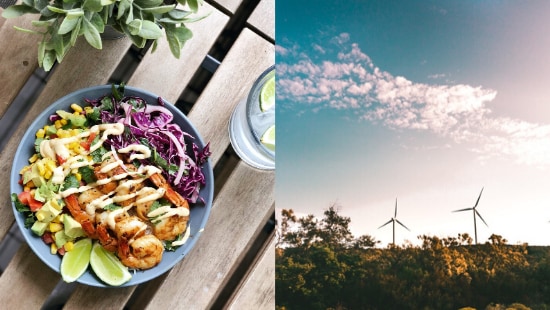Food Safety and Sustainability: Two Sides of the Same Coin

A recent World Health Organization (WHO) report underscored a connection that many in the food industry know well – environmental sustainability and food safety are linked. All along the food supply chain, businesses are increasingly looking at ways to reduce their carbon footprint and save water and energy – without compromising quality or food safety.
It’s an interesting challenge because some of the ways we currently deliver food safety can use a lot of resources – from the water used in cleaning and sanitizing processes, to plastic packaging to protect against contamination and ensure quality.
While technology and new innovations – such as Loop’s reusable packaging or smart temperature control in transit – absolutely play a vital role in bridging this gap, there’s another factor that will determine how successfully businesses can address this challenge: collaboration.
Specifically, sustainability teams and food safety teams can achieve much more if they work hand-in-hand. Why? Because both food safety and sustainability teams care about many of the same outcomes, like risk management, public health and brand perception – and the decisions one team makes can have significant implications for the other.
At the recent Global Food Safety Initiative conference, Ecolab’s Senior Vice President of Corporate Sustainability Emilio Tenuta moderated a panel about how organizations will need to adapt to ensure food safety in the midst of climate change. During the discussion, Mark Overland – who is responsible for food safety management at thousands of Cargill plants – shared an important insight: “While technology is great, we need to be really clear on our shared objectives and processes first.”
Mark is exactly right. By aligning on objectives and taking a unified approach to solving both food safety and sustainability challenges, organizations can drive much greater results.
Putting a shared approach into action
So, how can food safety and sustainability teams better work together to accomplish their shared goals?
One of the most important first steps is very simple – but highly effective: information sharing.
If a sustainability team sets a company-wide goal to reduce water use, it’s critical for them to understand how water is used in the cleaning and sanitizing process. Even better, they can actively engage their food safety team to co-create solutions that save resources, while maintaining food safety compliance. Take food processing plants, for example. In processing plants, hygiene and water are interrelated. By engaging the food safety team to reduce cleaning cycles (generally, through more effective processes or chemistry), the plant will use less water which leads to less waste generated.
Another key step is to assess sustainability in a way that includes the overall health and resilience of operations, which may include food safety. At Ecolab, we focus on eROI, or exponential return on investment. That means we assess a number of factors – including productivity, safety, operational costs, efficiency and reduced water and energy use – to determine the full impact and value we provide our customers.
This comprehensive approach ensures that teams are measuring and talking about success in the same way. It also helps reframe the conversation about food safety from a narrow, risk-mitigation exercise to one that shows the vital role food safety has on overall business performance and ultimately, growth.
By forging stronger relationships and aligning goals and success measures, food safety and sustainability teams can have a greater impact and can develop a better, safer and more sustainable way to deliver safe food to everyone.



